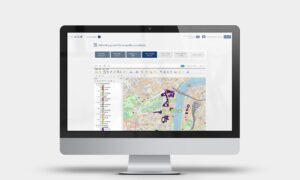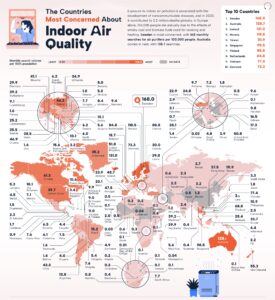Scottish low emission zone framework planned
Scottish Government consults on long-awaited draft proposals aimed at making Scotland’s air ‘cleanest in Europe’
A low emission zone framework and accompanying air quality modelling methodology are to be developed by the Scottish Government under plans outlined in its long-awaited draft Scottish Low Emission Strategy.
A 12-week consultation on the Strategy was launched on Friday (January 16) after several delays and includes proposals “aimed at making Scotland’s air amongst the cleanest in Europe”.
According to the Scottish Government, the draft document has been designed to draw together various policies being implemented and developed across local and central government, including a national framework for low emission zones.
Other actions outlined in the draft strategy include: revising the Local Air Quality Management System; establishing a PM2.5 monitoring network; developing a national communications strategy to raise awareness of air quality; and assessing the case for adopting World Health Organisation guideline values for PM10 and PM2.5 as Scottish Objectives.
The Scottish Government also aims to reach full compliance with the EU ambient air quality directive.
Launching the consultation, the Scottish Government’s Minister for Environment, Aileen McLeod, said: “Improving Scotland’s air quality is not something that can be tackled by Government alone — it needs action from local authorities, businesses, the third sector and the general public. This draft strategy provides a framework within which we can all work together to achieve our vision of Scotland’s air being amongst the cleanest in Europe and I urge as many people as possible to respond to our consultation.”
Minister for Transport and Islands, Derek Mackay, added: “This year will see record investment in active travel — nearly £40 million – to promote the uptake of cycling and walking, with £17 million being invested over the last two years in low emission vehicles and infrastructure and our Green Bus Fund scheme, which is supporting bus operators moving to cleaner, greener technologies. This investment is helping us achieve our vision of freeing Scotland’s towns, cities and communities from the damaging effects of petrol and diesel fuelled vehicles by 2050.
“Greater use of public transport, green infrastructure, cycling and walking will help make our urban areas more pleasant spaces to move around and spend time in, with additional benefits realised like reducing congestion, improving traffic flow, and delivering practical and financial benefits for businesses.”
The draft strategy follows Friends of the Earth’s claim earlier this month that there was “little sign of improvement” in air quality last year after levels of NO2 and PM10 increased slightly at several monitoring sites in 2014 (see airqualitynews.com story).
LEZ framework
Although there have been calls from air quality campaigners as well as the Labour Party for Westminster to draft a national LEZ framework, Scottish would be the first area in the UK to commit to such a policy.
In the UK there are currently LEZs in London, Brighton, Oxford and Norwich, which see vehicles not meeting defined emission limits in areas of poor air quality restricted or deterred via a charge from entering the LEZ.
However, although Glasgow, Edinburgh and Aberdeen have conducted LEZ feasibility studies, no LEZs have actually been implemented in Scotland, and the draft Strategy states that feedback from local authorities suggests that a national LEZ framework “would do much to encourage a shift from feasibility to implementation”.
The framework would therefore seek to assist cities and local authorities in taking the steps from feasibility study to final implementation, as well as providing certainty and consistency across Scotland for those drivers affected.
The draft Strategy outlines a mandatory procedure for authorities to follow in order to implement an LEZ, beginning with a screening assessment, evidence gathering and a feasibility study, before reaching final implementation and monitoring and managing.
However, it states: “within this framework, individual or regional groupings of local authorities should develop their own approach to LEZ implementation based on their own particular circumstances”.
And, according to the Strategy, with “careful planning, scheme design and management” implementing an LEZ should not adversely impact on the local economy.
National modelling framework
Alongside the LEZ framework, the draft Strategy sets out the Scottish Government’s intention to develop a National Modelling Framework with the Scottish Environment Protection Agency (SEPA) and key partners.
This is because, according to the strategy, it is “essential that the LES [Low Emission Strategy] is supported by modelling and data analysis undertaken in a consistent manner”.
The Modelling Framework includes and air quality assessment tool, guidance documents, data requirements, best practice and ‘web-based interactive data products’ aimed at providing a standardised approach to modelling air quality at regional and local level, which will feed into the process of exploring possible LEZs.
According to the draft Strategy: “A national framework ensures that, although the issues and sources may differ between authorities, the decision making process is undertaken throughout Scotland consistently and to the same standards.”
The draft Scottish Low Emission Strategy consultation closes on April 10 2014.













